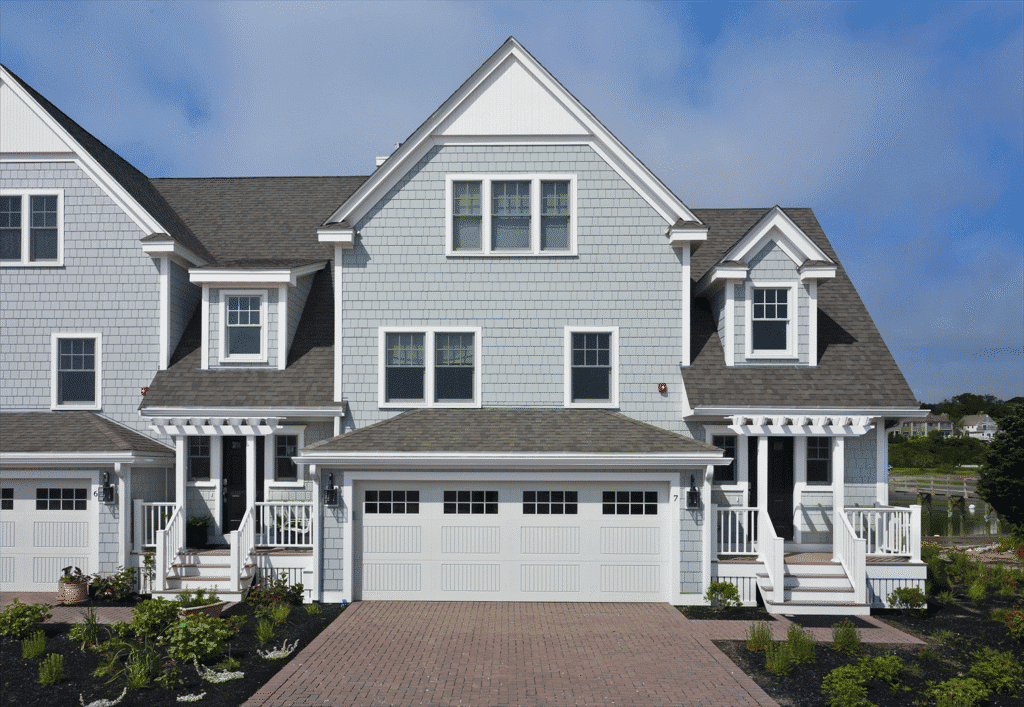
The right house siding will transform your home in more ways than one. It can improve both heating and cooling effectiveness, dazzle with wow-worthy curb appeal, and protect against budget-killers like rot and other damage.
With all these important benefits, the pressure is on to get your exterior house siding selection just right. As experts in the unique demands of house exterior siding in Canada, we’re here to guide your decision so that you end up with something beautiful, affordable, and durable.
Let’s dive into all the aspects of siding, from costs to styles to how to choose the best house siding companies.
What Is House Siding and Why Do You Need It?
House siding is also called cladding, and is your home’s first line of defense against the elements and all the damage they can do. It’s attached directly to the home’s exterior walls for protection. While that’s probably a good enough reason to at least get a quote, exterior siding will also beautify your home’s exterior, help with increased resale value, and save money by keeping heat and air conditioning running efficiently
What’s on the Outside Counts – Finding the Best House Siding Material
With the demands of the varying Canadian seasons, the siding material absolutely makes a difference. You don’t want to sacrifice functionality for style or spend more than your budget allows. Check out these 10 options organized by average starting cost (we’ll break down the actual costs later):
1. Vinyl Siding
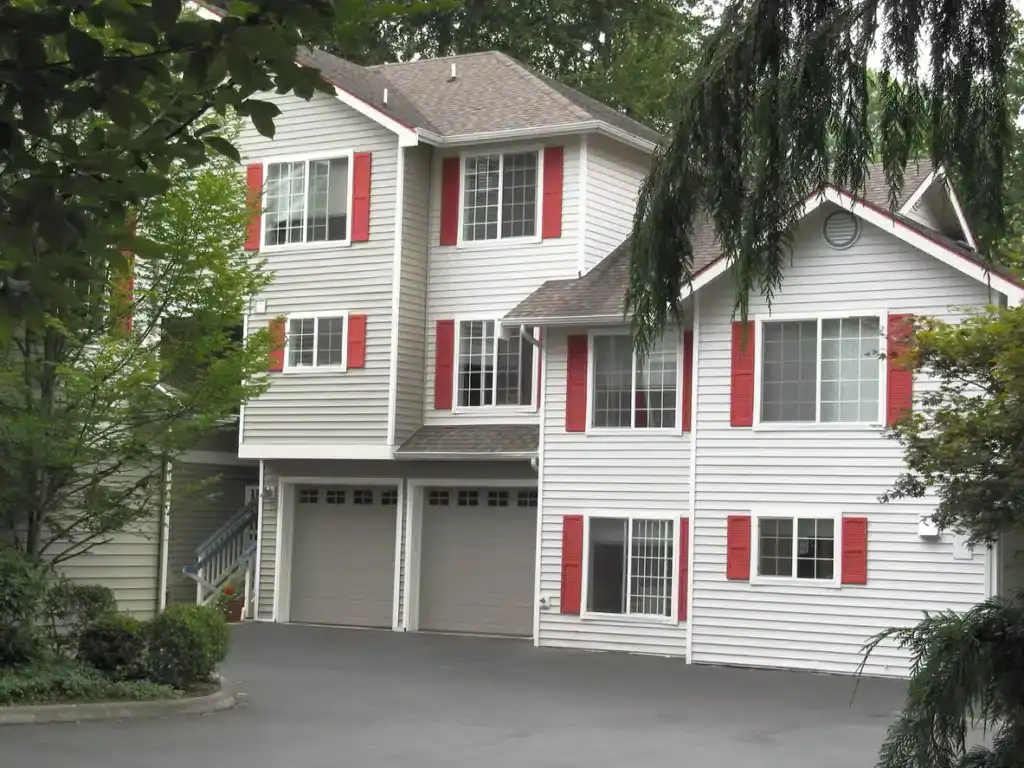
Vinyl siding is very popular, and that’s not just because of its low price point. Although it’s affordable, it’s still suited to hot and cold climates and has tons of variations to create a facade with interest and style. Easily customize your look by installing it vertically or horizontally.
To keep vinyl siding in tip-top shape, generally, all you need to do is clean it. And, if you want to completely change the look of your home, it’s paintable, although you need the right paint and the right process.
Advantages:
- Affordable – can cost 50% less than other materials
- Can be installed during any season
- Can be insulated to help with a home’s energy efficiency and noise reduction
Pro Tip: Avoid cheaper vinyl for house siding in Canada to limit cracking from temperature extremes and damage from weather like hail.
2. Engineered Wood Siding
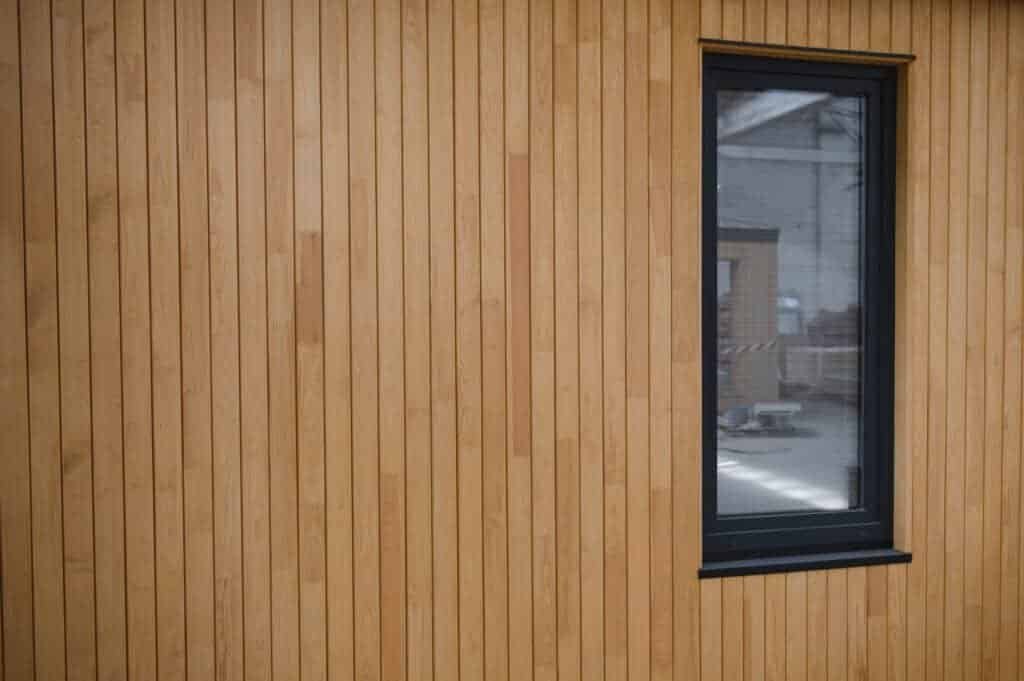
With engineered wood exterior house siding, you get wood grain warmth without the high maintenance, splitting, and warping of real wood. Most people will struggle to tell the difference, so you’ll have both durability and visual appeal.
As a bonus, because it’s engineered and not real wood, this is a fantastic, eco-friendly alternative. Some engineered wood siding is prone to moisture issues, but with new sealing technologies, issues like swelling are a thing of the past.
Advantages:
- Eco-friendly
- Impact-resistant
- Provides good insulation
Pro Tip: Get creative and have engineered wood siding installed using a mix of board and batten, shingles, shakes, and traditional lap. It adds charm and will differentiate your home from your neighbours.
3. James Hardie Siding

Don’t let the name confuse you. James Hardie siding is a combination of fiber and cement. It allows homeowners to achieve a lovely wood look backed by the strength of cement.
If you want the house siding that lasts the longest, Hardie is it. While most other siding types are expected to last an average of about 30 years, it’s not uncommon for James Hardie’s fiber cement siding to last more than 50 years.
Advantages:
- Extremely durable
- Completely non-combustible
- Low maintenance
Pro Tip: Hardie siding is heavy and must be cut with specialized tools, which can negatively impact the installation time and the cost. Be prepared!
4. EasyTrim Quick Panel Siding Systems
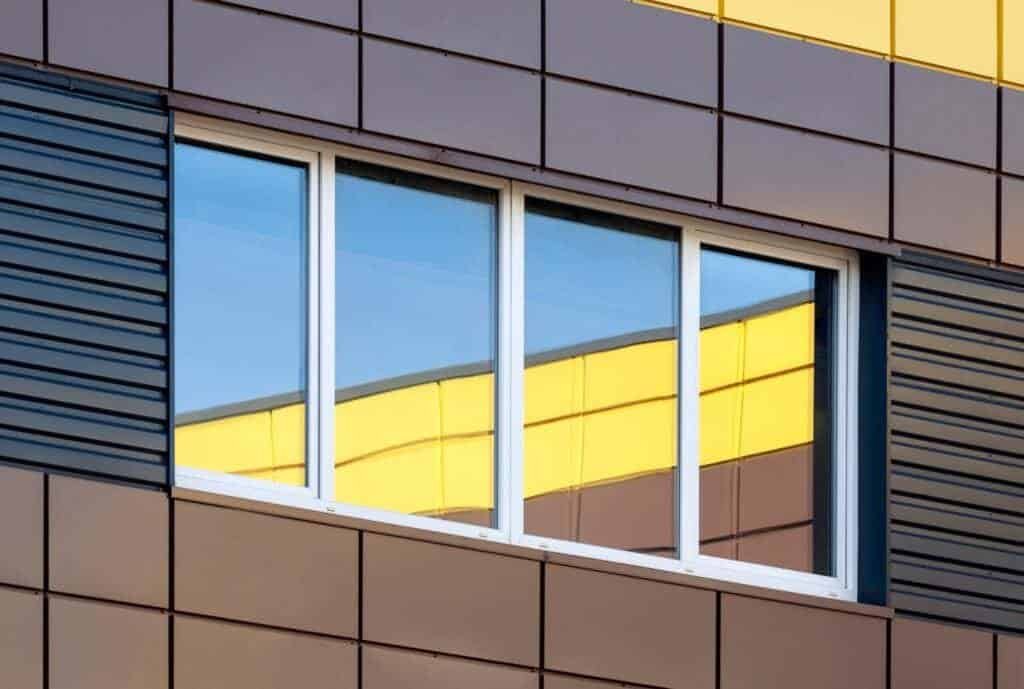
For built-in drainage, versatility in application, and faster installation, it’s hard to beat EasyTrim. It’s aluminum, so it won’t warp or wrinkle. As a panel system, it can seamlessly create contrasting patterns without risking water incursion.
Imagine your home’s exterior with horizontal and vertical siding combined with different colours and finishes. It’s possible with EasyTrim Quick Panel systems.
Advantages:
- Sleek, modern design
- Made for Canadian homes, withstands temperatures from -40°C to +30°C
- Maintenance-free
Pro Tip: Hire a professional like Family Siding to install your EasyTrim system. One wrong cut will scrap the entire panel.
5. Aluminum Siding
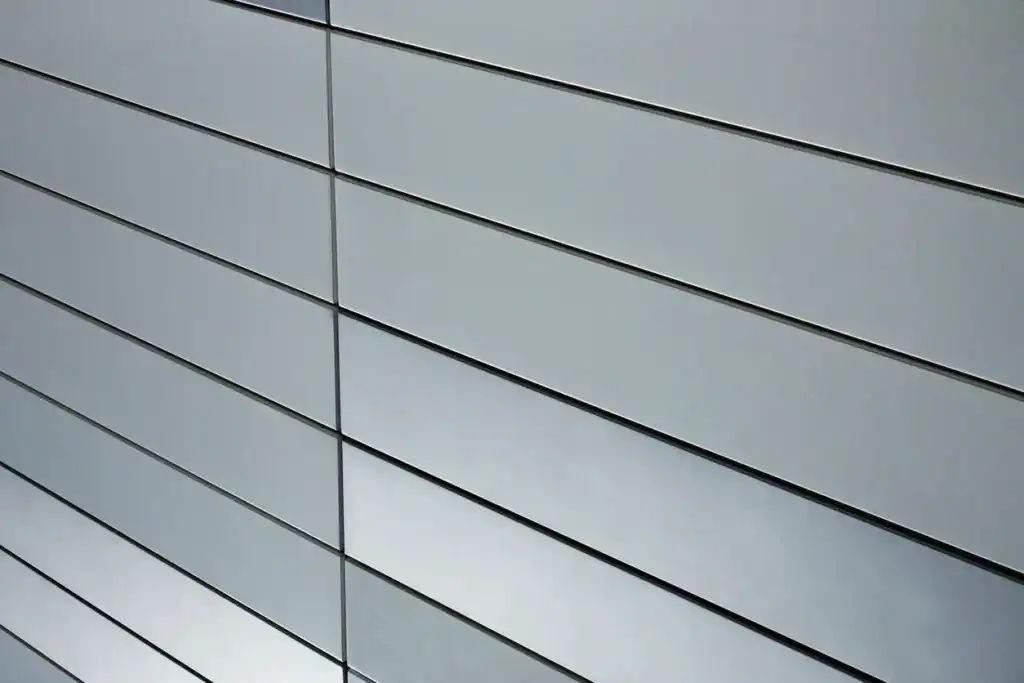
Like other siding, aluminum comes in various styles. Get the appearance of wood without the maintenance commitment or warping and insect issues. Aluminum siding is versatile and comes in timeless neutral colours, bright hues, or wood finishes.
Aluminum siding easily takes care of exterior issues like drainage and thermal movement – it has definitely evolved.
Advantages:
- Lightweight for faster installation and less strain on the home’s structure
- Coated aluminum resists UV damage
- Huge variety of colours and finishes
Pro Tip: Cheaper aluminum house siding choices may not be wise, as they can be more prone to denting.
6. Metal Siding

While technically aluminum is a metal, we’re talking about steel now. For homes in Canada, metal siding has definite perks. When installed vertically, the snow just slides off, and more traditional configurations offer unparalleled wind resistance.
For an elevated style, choose between traditional lap installation or inventive options that are corrugated or have embossed patterns.
Advantages:
- Lasts up to 50 years
- Protective coating prevents rust
- Rated for high winds up to 140 mph and temperatures from -50°C to +50°C
Pro Tip: Steel siding may not have the same insulation against noise as other house exterior siding. Consider an added layer of insulation.
7. Cedar Siding
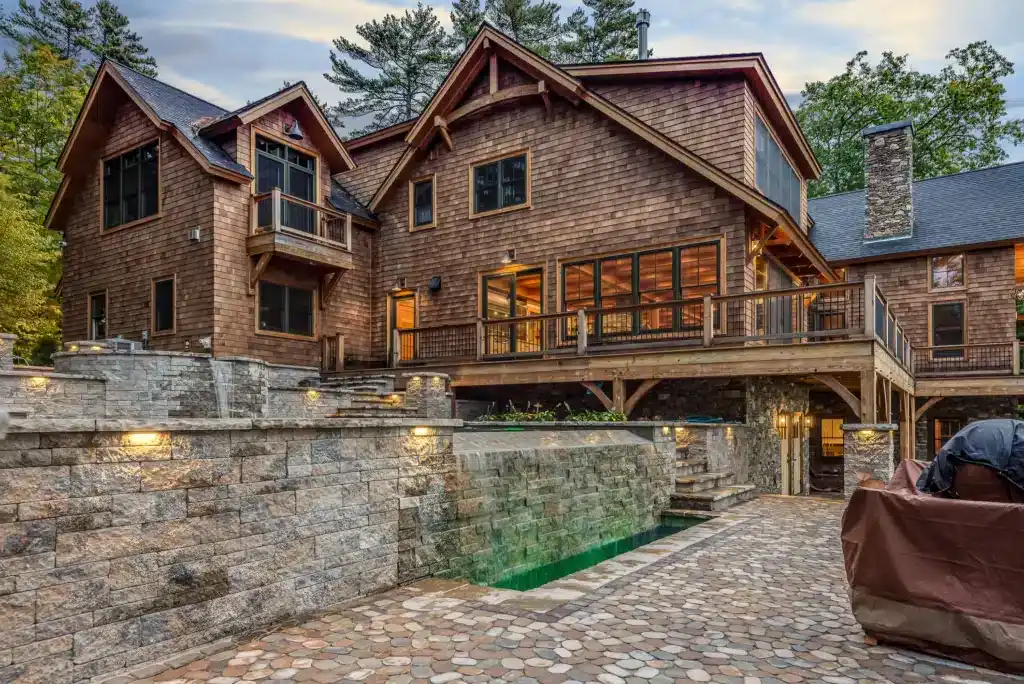
Cedar siding adds dimension and warmth to your home’s facade. Take advantage of the material’s natural beauty and incorporate cedar shakes, shingles, and boards into your design. Cedar siding is also naturally repellent to insects like carpenter ants that can damage other types of wood.
There is a little more maintenance with cedar because, depending on the conditions, it can require re-staining or painting every five years or so. But that’s a small price to pay for such beauty, isn’t it?
Advantages:
- Provides natural insulation
- Modern finishes will reduce fading
- Makes a statement for a relatively low price
Pro Tip: Look for western red cedar options. It stands up to water and decay the best.
8. Lux Panel Siding
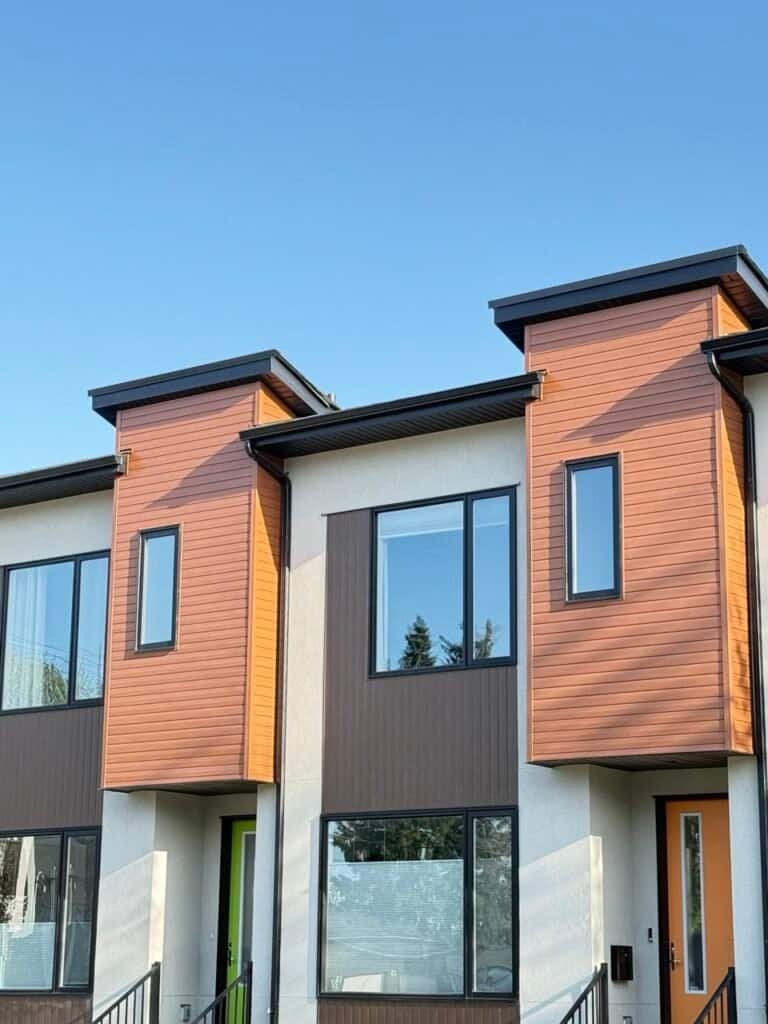
When you want something that withstands -40°C temps, lets Chinook winds roll off its back, and requires little-to-no maintenance, Lux siding has you covered – literally. The material is flexible and can work for homes with odd angles and curves, so you can use it just about anywhere.
As with other siding choices like engineered wood and Hardie, you can have that wood finish you want without the issues that often happen with actual wood.
Advantages:
- Ideal for mixed material siding installations
- Fade-resistant finishes
- Good for energy efficiency
Pro Tip: For exteriors with mixed siding, Lux panels offer a smooth transition from one material to the next. Use it for siding combinations without the risk of leaks or pooling.
9. AL-13 Siding

9. AL-13 Siding
Thinking of building a modern home or giving your traditional home a modern facelift? Consider AL-13 siding panels for continuous clean lines. It’s an aluminum composite product that doesn’t come with off-site fabrication delays.
The installation is seamless in most instances, using hidden fasteners, and works on all surfaces, regardless of their shape or angle. Easily gain added curb appeal from AL-13’s bold colours and sought-after patterns for an upscale look.
Advantages:
- Made from recycled materials
- Non-combustible
- Modern, yet durable
Pro Tip: Think about combining this panel siding with another more affordable option, like EasyTrim, to keep costs manageable.
10. Longboard Siding
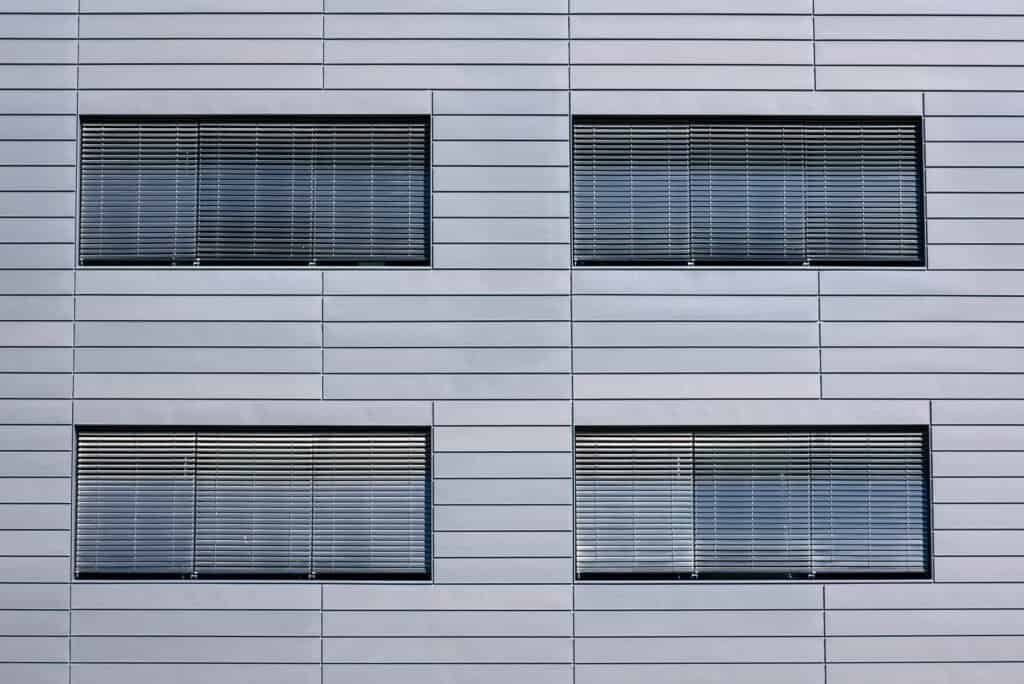
Made of premium aluminum, Longboard siding is extremely durable and is a versatile choice that can combine into a modern or traditional design. It’s light, coated for UV-resistance, and maintenance-free.
This siding will withstand anything the Canadian climate can throw at it and mimics everything from brick to natural stone to aged metals.
Advantages:
- Integrated thermal breaks for home comfort
- A variety of finishes
- Excellent durability
Pro Tip: Before going all in with this house siding, know that it’s the most expensive option, so be prepared to expand your budget.
All the house siding materials here will shield your home from the elements, offer fire protection, and are generally impact resistant. Simply decide on the look you want, how much maintenance you’re willing to do, the longevity you need, and what fits within your budget. Easy, right?
Siding Costs and Estimating Coverage
Before you can really make your siding decision, you need to know how much you need and at least a ballpark of what it costs.
Calculating Your Siding Needs
To determine how much exterior house siding your project calls for, you need to know the total square footage. Measure each exterior wall’s height and width, and multiply the two. Do your best to approximate for two or three-story homes, as all reputable house siding companies will offer a real quote before starting any work.
Sometimes, you also need to calculate how many panels you need. A panel is generally 100 square feet, so for a 1,500 square foot house, you’d need 15 panels, plus extra for off-cuts.
Siding Prices – Which Options Can You Afford?
The materials you use dictate the style, longevity, and durability of your siding, but coveting siding you can’t afford will lead to disappointment. Here’s a breakdown of the average cost to cover a 1,500 square foot house, although it varies based on the finish and other factors:
| Material Type | Typical Cost Range (per sq ft) | Total Cost for 1,500 sq ft | Average Lifespan |
| Vinyl Siding | $7.50 – $10 | $11,250 –$15,000 | 20 to 40 years |
| Engineered Wood Siding | $8 – $14 | $12,000 – $21,000 | 20 to 30 years |
| James Hardie Siding | $10 – $12.75 | $15,000 – $19,125 | 50+ years |
| EasyTrim Panel Siding | $10 – $25 | $15,000 – $37,500 | 20 to 40 years |
| Aluminum Siding | $10 – $30 | $15,000 – $45,000 | 20 to 40 years |
| Steel Siding | $12 – $15 | $18,000 – $22,500 | 50+ years |
| Cedar Siding | $13 – $15 | $19,500 – $22,500 | 20 to 40 years |
| Lux Panel Siding | $30 – $50 | $45,000 – $75,000 | 40+ years |
| AL-13 Siding | $35-45 | $57,000 | 20 to 40 years |
| Longboard Siding | $45 – $60 | $67,500 – $97,500 | 40+ years |
As you can see, the cheapest siding to put on a house is vinyl, which can cost as little as $11,250 for a 1,500 sq ft house. While it’s the cheapest material to cover exterior walls, it has its drawbacks, too. It can be more prone to cracking and damage on the lower end of the price scale, so the cheapest option isn’t always the best.
On the other end of the spectrum, wrapping the same house with Longboard siding could set you back almost $100,000. As you’d imagine, this is generally used in commercial and truly upscale home design.
Factors That Influence the Cost of Exterior House Siding
When getting a general online quote for siding, know that your actual quote can be more expensive if you answer yes to these questions:
- How suitable is the installation surface? Does it need a lot of prep and repair?
- Is custom work required, like painting or trim?
- Is the installation complex involving multiple angles and hard-to-reach areas?
- Will the house siding company be removing the existing siding?
- Did you underestimate your square footage needs?
Advice From the Experts For Choosing Your House Siding

- Aim for the highest quality of house siding you can afford. It’s a long-term investment, so it’s worth spending to your max to have it installed by professionals, look great, and meet all your needs.
- The best colour of siding is one that you can live with for the next 40 to 50 years. If maintained properly, many materials will be functional for this long period. It’s best to stick with neutral colours, knowing it’s much easier to change trim paint or shutters than the entire home’s siding.
- In terms of value, one of the best siding options for houses in Canada is James Hardie. It’s ideal for homes with high sun exposure, is made of a robust cement-fiber combo, is low maintenance, and quite affordable, especially given its 50+ year life.
- Anyone who likes to change their home’s appearance somewhat regularly should look for paintable siding choices. In general, you can paint most siding, including vinyl, cedar and other wood, aluminum, and fiber-cement.
How to Find the House Siding Company Your House Deserves
Not all house siding companies are created equal. You want to do your due diligence to ensure you choose a reliable and trustworthy company for such an important (and sometimes quite costly) job.
- Check out reviews. A great way to judge a house siding company is to see what others are saying about them. Are they satisfied? What challenges have they faced?
- Climate is important. Look for companies familiar with your local climate. They’ll have experience in what works and what doesn’t, and can offer recommendations.
- Confirm licenses and insurance. You need a properly licensed company, and one that carries insurance for liability and workers’ compensation in case of accidents on your property.
- Verify warranties. Make sure the siding company stands behind their work. Review warranty documents and scour reviews for warranty mentions.
- In-person is best. Search for a company that offers on-site quotes by qualified installers. Your quote will be more accurate, and you can ask direct questions.
- Compare quotes. Always get a minimum of two to three quotes. Don’t judge them solely based on price. Instead, look at the price in conjunction with the company’s responsiveness, warranties, customer service, and proven results.
- Peruse past projects. Companies that are proud of their work will showcase it. Go through the website and see the quality of work you can expect, or ask for references.
- Material selection. Choose a company that offers a combination of the newest type of siding for houses, like Hardie and new steel options, and tried and tested favourites like vinyl and aluminum. That way, you won’t limit your design or durability choices.
Siding Trends Canadians Are Loving Right Now
You may think that house siding doesn’t evolve all that much, but that couldn’t be further from the truth. Vinyl is becoming a better insulator, with many current ones offering foam backing to help with energy efficiency and noise reduction. Plus, things like wood finishes are getting more and more realistic.
Here are some trends to watch out for in 2025 and beyond:
- Combining materials, textures, and installation techniques. You will see board and batten mixed with traditional lap siding or vertical aluminum siding mixed with cedar shingles.
- People are flocking more towards bright and bold colours to make a statement. Rich greens and deep blues, or unconventional neutrals like black, are becoming increasingly popular.
- Homeowners are starting to prefer modern facades over traditional ones. This means clean lines and panel or longboard installations are on the rise.
- Although more traditional, cedar siding is making a comeback, especially mixed with more modern materials.
Siding Essentials to Take With You
Understandably, you want to get your siding decision right. It will affect the curb appeal, energy efficiency, maintenance requirements, and resale value of what’s likely your most expensive possession.
Armed with all this information, your siding adventure should feel much more straightforward with these key points in mind:
- Hardie siding offers great value with no maintenance other than cleaning, and can last for upwards of 50 years. It’s non-combustible, pest-proof, and ideally suited to the Canadian climate.
- When choosing house siding companies, look for ones with good reviews, generous warranties, competitive prices, and a good service record.
- Vinyl is the cheapest exterior house siding option available and the most widely used in Canada.
- House siding prices in Canada vary significantly based on the material selection. For a 1,500 square foot house, they range from as low as $11,250 for vinyl to nearly $100,000 for Longboard.
- Most siding options can be painted with proper cleaning, paint, and application.
- Hardie, steel, Longboard, and Lux panel siding have the best longevity, usually lasting for 40 years or more.
Looking for help to revamp your home’s exterior? Family Siding provides risk-free quotes, on-site consultations, and flexible financing to bring your siding vision to life!
 James Hardie
James Hardie Vinyl
Vinyl Cedar
Cedar AL13 covering
AL13 covering Aluminum
Aluminum Metal
Metal Engineered Wood
Engineered Wood Lux Panel
Lux Panel Longboard
Longboard Easy Trim Quick Panel system
Easy Trim Quick Panel system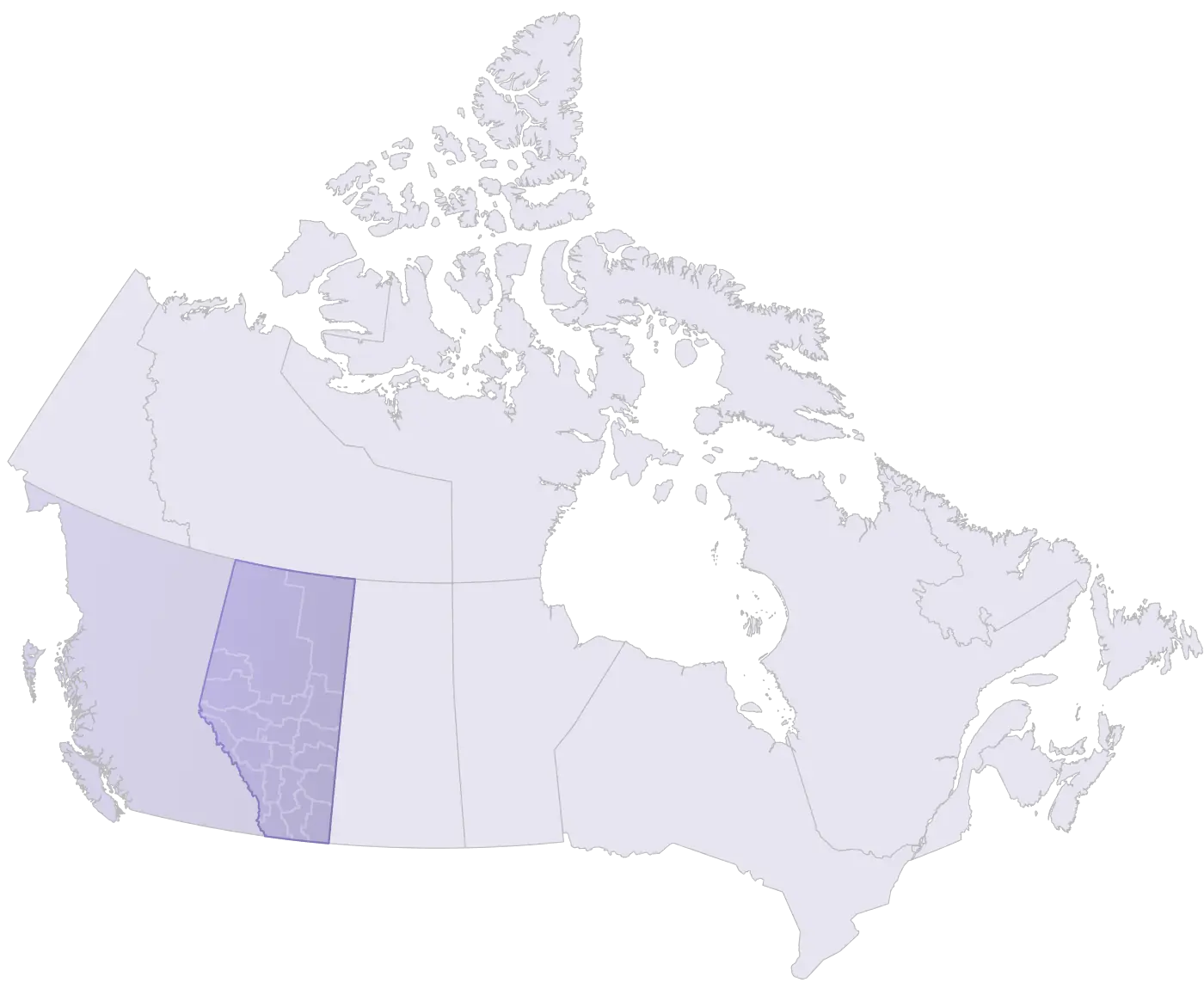
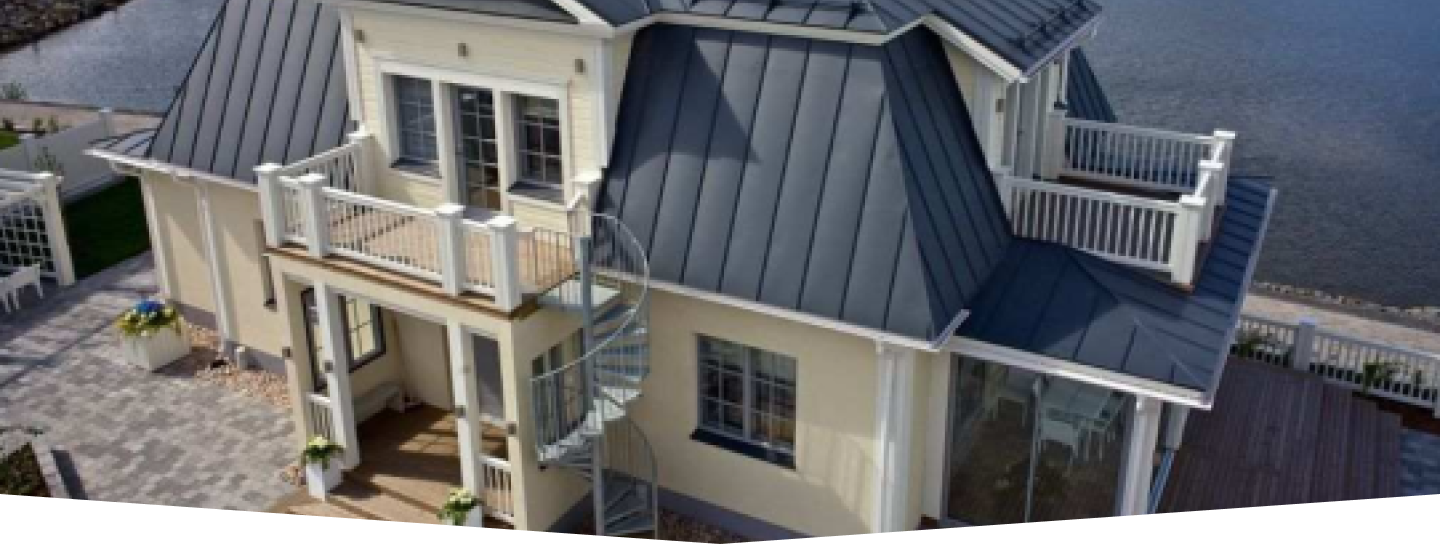
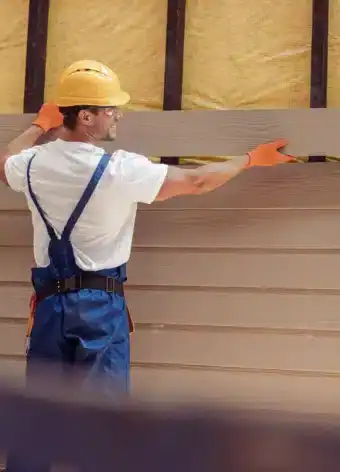

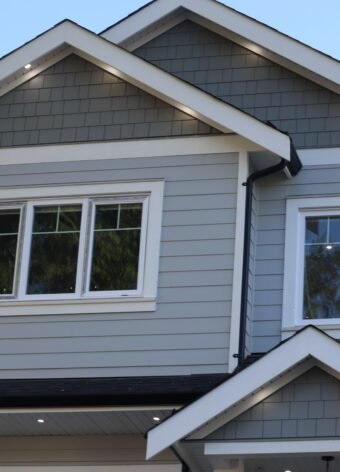
Leave a comment
asdasdasdasddTEST
Test qwerty 3
qwerty123
TestTestTsrtwq
Testfghjknml,;./’
34r23e12w`
testcoment